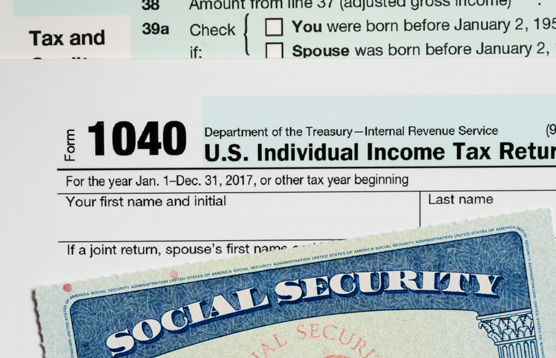A growing number of Americans owe income tax on part of their Social Security benefits. You typically won’t owe income taxes on your benefits if they represent all of your income. But significant income from work, investments or a pension — on top of Social Security — could be an income-tax liability. In addition to the feds, some states — predominately in the Midwest — tax Social Security benefits. (The states have a hodgepodge of tax rules and exclusions for Social Security, so check with your own state tax agency or accountant to figure out whether that applies to you.)
 © Steve Heap / Shutterstock.com
© Steve Heap / Shutterstock.comThe state tax agencies go by different names, but you can find contact information for yours at the Federation of Tax Administrators.
Whatever your income, however, at least 15 percent of your Social Security benefit is protected from the tax collector. No one pays income tax on more than 85 percent of his or her benefits. Importantly, single filers are treated differently than married couples filing a joint return. You can go through a few steps to get a rough idea of how taxation of benefits may affect you:
1. Get a rough idea of your provisional income, or what Social Security calls your combined income.
Your provisional income is the sum of wages, interest (taxable and nontaxable), dividends, pensions, self-employment income, other taxable income, and half of your Social Security benefits, less certain deductions you may take when determining your adjusted gross income.
2. See where your provisional income level fits into the tax rules.Say you file as an individual, and your combined income is under $25,000. If so, you owe no taxes on your Social Security. If your provisional income level is between $25,000 and $34,000, you may have to pay income tax on up to 50 percent of your benefits. If your combined income is above $34,000, you may have to pay income tax on as much as 85 percent of your Social Security benefit.
For married couples, the levels are different. If a couple has provisional income of less than $32,000, you’re in the clear. If provisional income comes in between $32,000 and $44,000 on your joint return, you may owe income tax on up to 50 percent of your Social Security benefits. Couples who earn more than $44,000 may have to pay taxes on as much as 85 percent of their benefits.
Married people who file separate tax returns and receive Social Security typically have to pay some tax on their benefits. This is because for people in this category, the limits are zero, meaning that up to 85 percent of Social Security benefits may be subject to the income tax.
3. Determine exactly how much of your benefit may be taxed.This can get complicated, depending on your personal situation, especially if you have to include 85 percent of your benefits as part of income for tax purposes. To do it right, you need to fill out a step-by-step worksheet, or rely on tax software or your accountant. You can find a worksheet at the IRS website.
Every January, you should receive a Form SSA-1099 that tells you your total Social Security benefits for the prior year. You need this information for your federal tax return.
Here’s an example: Tom and Carol are a married couple who file jointly. Tom’s Social Security benefit comes to $7,500, and Carol’s spousal benefit adds another $3,500. Tom also gets a taxable pension of $22,000 from his former job with an automaker and interest income of $500 from some certificates of deposit. Tom and Carol figure out their provisional income by adding $22,000 plus $500 plus $3,750 (half of Tom’s benefit) plus $1,750 (half of Carol’s benefit) for a total of $28,000.Tom and Carol pay no federal income tax on their Social Security benefits, because their provisional income of $28,000 comes in below the $32,000 threshold for a married couple filing jointly. But suppose they had more income. What if Tom’s pension came to $30,000? That extra $8,000 would boost the couple’s provisional income to $36,000 — well above the $32,000 threshold for married couples. In this case, Tom and Carol would owe income tax on about 18 percent of their Social Security benefits.
As of this writing, U.S. citizens who live in certain countries, including Canada, Chile, Germany, Greece, Ireland, Italy, Japan, Switzerland, and the United Kingdom, don’t have to pay income tax on Social Security or are subject to low rates, no matter how big their income. This is because of tax treaties between the United States and those nations. (The list may change over time.)
Paying your taxes ahead of time
You may be required to send quarterly estimated payments to the IRS if you have tax liability that isn’t handled through withholding from an employer. Separately, you may request to have federal taxes withheld from your Social Security payments. You can get the IRS Form W-4V to request voluntary withholding or call the IRS at 800-829-3676 (TTY 800-829-4059). There’s also a link to the form through the Social Security Administration (SSA).If you choose to withhold federal income taxes, you can select only among certain percentages: 7 percent, 10 percent, 12 percent, or 22 percent of your monthly benefit. You should return the signed form to your local SSA office.

